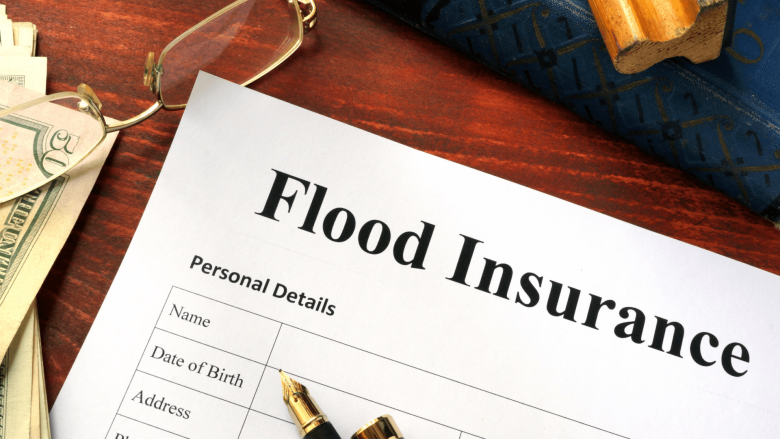Flooding is a common natural disaster that causes billions of dollars of damage each year. Many homeowners are not prepared to protect their homes from flooding. Flood insurance can help. Understanding what flood insurance is, and whether or not you need it, can help you avoid a potentially devastating financial loss.
Flood insurance is a specialized policy that covers losses and damages caused by flooding. This type of coverage, unlike standard homeowners insurance, which doesn’t cover flood-related damage, is designed to give peace of mind and financial protection to both property owners and tenants. Is it right for you? Explore the details so you can make an informed choice.
Understand Standard Homeowners’ Insurance Limitations
Most homeowners are under the mistaken impression that their standard homeowner’s insurance will cover them for all kinds of damages, including floods. It is incorrect. Flood damage is not covered by homeowners insurance.
Most standard policies exclude flooding because it is a separate peril. Many homeowners are left vulnerable to financial disasters in the event of a flood. Due to the high cost of flood damage, homeowners insurance may not cover all costs. These limitations highlight the importance of separate flood insurance.
Flood Risk Factors and Insurance Needs
To determine if you need flood insurance, it is necessary to evaluate the flood risk of your property. This risk is dependent on a variety of factors, including geographic location, local weather patterns, and even human activities such as the development or construction of infrastructure near your property.
Flood insurance is a must for properties located in high-risk zones, as designated by FEMA. Flood insurance is not only for high-risk zones. In fact, 20% of claims are from low- and moderate-risk zones. It is important to understand your region’s history and topography in order to determine if extra coverage is needed.
Climate change is also a major factor. With the rising sea level and more severe weather patterns, previously low-risk areas may now be at greater risk of flooding. FEMA’s Flood Map Service helps homeowners understand their flood risk, allowing them to make more informed insurance decisions.
Flood Insurance Policy Components
Flood insurance policies typically include two main components: building coverage and contents coverage. The building coverage covers the foundation, plumbing, electric systems, and built-in appliances of your home. Contents coverage, on the other hand, reimburses policyholders who have had their personal items damaged by a flood. This includes furniture, clothing, and electronics.
Flood insurance policies are subject to coverage limits, and may require additional policies for properties of high value. The policy will not cover parts of your home that aren’t insured, like decks, swimming pools, landscaping, or decks. Understanding the exclusions and inclusions of your flood insurance policy will ensure that your property is properly protected.
The Cost Factors and Coverage Options
Flood insurance costs can be affected by many factors, including your property’s location and flood zone designation. They also depend on the age of the structure, as well as its elevation. Premiums for properties located in high-risk zones may be higher, but policies in lower- and moderate-risk zones are generally more affordable.
Costs are also affected by the extent of coverage. A policy that offers comprehensive building and contents protection will cost more than a less robust one. To avoid underinsuring, it is important to balance cost and coverage. Explore coverage options with both private insurers and the government-backed National Flood Insurance Program to find the right fit for you and your budget.
How to Buy Flood Insurance
The process of obtaining flood insurance is relatively simple. The first thing you need to do if you are purchasing flood insurance through the NFIP is determine if your community is a participant in the program. Private insurers are an alternative for properties located outside of participating areas.
Talk to your homeowners’ insurance provider about the different options. Keep in mind, however, that most flood insurance policies require a 30-day wait period after purchase. To avoid being unprepared, it is important to plan ahead and secure coverage before the rainy seasons or storm warnings.
Claim Process and What To Expect
Understanding the claims process will make it easier to manage. Document the damage with pictures and videos. Report the damage to your insurer as soon as possible and include all the necessary details.
An adjuster from your insurer will most likely be sent to the scene to determine the extent of the coverage under your policy. The insurer will then finalize your claim and pay you for any eligible damages. While the process may be lengthy, being organized and open with your insurance company can speed it up.
Case Studies: Real-Life Examples
Consider the story of a homeowner who lives in a flood-prone area and whose policy saved him from bankruptcy. The homeowner’s home sustained damages of more than $120,000 after a hurricane of category three caused severe flooding. The homeowner was able to get the repairs covered by a flood insurance policy.
Compare this to a second homeowner who experienced unexpected flash floods, despite not living in a high-risk area. They faced repair costs of more than $50,000 without flood insurance. This highlights the unpredictable nature of flooding, and the importance of having coverage in even low-risk zones.
Expert Advice and Opinions
Experts agree flood insurance is an excellent investment, and not only for homeowners in high-risk zones. FEMA states that “just an inch of flooding in your home could cause damage worth more than $25,000,” which can be devastating to most families.
Flood insurance advisors encourage homeowners to review their policies every year to ensure they are adequately covered and to consider their risk of flooding, especially in light of changing climate patterns. Consult an agent or broker for a tailored recommendation when it comes to flood insurance.
FAQs
1. Do I still need flood insurance even if I don’t live in an area at high risk?
Yes! Flooding can occur anywhere. 20% of claims for flooding are from properties located outside high-risk areas.
2. Can renters buy flood insurance?
Absolutely. Renters may choose to cover their contents against flood damage.
3. Flood insurance covers temporary housing costs.
Not usually. Flood insurance policies are primarily focused on damage to property and contents. Additional insurance may be required for temporary housing.
4. What is the average cost of flood insurance?
The cost of premiums can be affected by location and coverage. Costs in low-risk areas can be between $300 and $500 per year, while those in high-risk zones are often over $1,000.
5. Add flood insurance to your existing homeowners policy.
Flood insurance is usually a separate policy. Your homeowners’ insurer can help you with the process.



